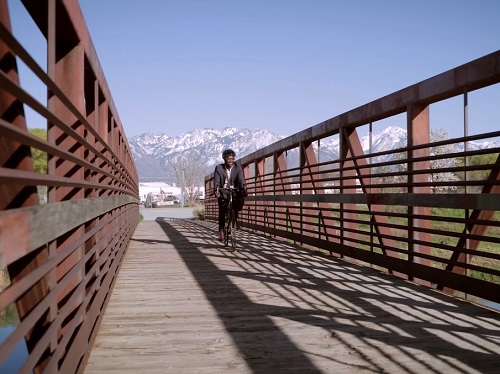The Texas Department of Transportation is developing a Statewide Active Transportation Plan or SATP to gather recommendations for improving bicycling, walking, and rolling conditions across the Lone Star state.
[Above image by TxDOT]
The agency noted in a statement that its SATP focuses on community needs to identify mobility priority areas while making and improving connections between trails, paths, and transit services in order to offer safe and efficient multimodal options for personal travel.
TxDOT added the SATP is being integrated with its other long-range mobility plans to help it maintain a safe, accessible, connected, and fully integrated multimodal transportation system for the future, since the population of Texas is expected to grow by 28 percent by 2050.
[Editor’s note: The American Association of State Highway and Transportation Officials recently appointed Nancy Daubenberger – commissioner of the Minnesota Department of Transportation – and Rob Bedenbaugh, director of the Office of Engineering Support for the South Carolina Department of Transportation, to two-year terms as chair and vice chair, respectively, for the AASHTO Council on Active Transportation. AASHTO’s Council on Active Transportation addresses issues related to using human-powered means of travel, which includes walking and bicycling, with or without the use of mobility aids; and may also include using other human-scaled or micro-mobility devices that may be electric-powered or electric-assisted, such as e-bikes and e-scooters.]
In the fall of 2023, TxDOT said it held virtual and in-person meetings statewide to gather input from more than 4,800 people, stakeholders, and other groups to help shape the SATP. Through this outreach, people were encouraged to provide input on their top priorities when it comes to active transportation. Common themes included:
- Increased safety. Almost 75 percent of those surveyed don’t feel safe using active transportation. They want to see lower speed limits and additional lighting on sidewalks and bike lanes.
- Better access and connections to trails and continuous bike lanes along with connections to places that are frequently visited destinations.
- Sidewalk improvements, including curb maintenance and the removal of physical barriers.
- Roadway crossing improvements to help Texans feel more confident crossing the street.
With one round of outreach complete, TxDOT said it is now focused on analyzing community feedback and individual input to fine-tune the SATP. This plan is evaluating best practices, specific case studies and research for improving biking, walking and rolling. Through recommended strategies and actions, the plan will work to integrate safety, accessibility, comfort, connectivity, community needs, health and economic vitality.
TxDOT noted that it is working on the SATP in conjunction with its Statewide Multimodal Transit Plan and will collect additional public input on a draft plan to be released in the fall of 2024. The agency pointed out that the public will have the opportunity to evaluate recommendations and provide input on the SATP’s draft plan before it is presented to the Texas Transportation Commission in late 2024.
In November 2023, the Texas Transportation Commission approved over $345 million for new sidewalks, bikeways, and other types of active transportation infrastructure projects statewide.
That funding supported 83 projects designed to improve bicycle and pedestrian access while providing safety enhancements and mobility options to schools, jobs, public transit systems, and local destinations, the commission said. TxDOT noted that some the projects approved by the commission include sidewalks connecting to schools and transit options, shared-use paths benefiting both pedestrians and cyclists, new pedestrian bridges, and 15 planning studies.
Several state departments of transportation across the country have also introduced active transportation-specific plans in recent years.
For example, the Kansas Department of Transportation unveiled a revised active transportation plan in May 2023 to boost walking, bicycling, safe wheelchair use, skateboarding, and non-motorized vehicle mobility options across the state.
The Oklahoma Department of Transportation also began working on its first-ever active transportation plan in 2023 – a policy toolkit the agency said can be used internally and by Oklahoma counties and towns as engineers and designers look to develop more people-friendly infrastructure.
The plan will address walking, biking, “wheelchairs and mobility scooters, pedal and electric scooters, electric bikes, skateboards, and other similar wheeled vehicles,” according to a website developed by the agency that details the plan’s contents.
Meanwhile, the Washington State Department of Transportation unveiled a formal Active Transportation Plan in December 2021 – a plan that subsequently won the 2022 America’s Transportation Awards contest’s “People’s Choice Award.”


